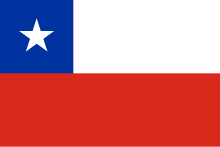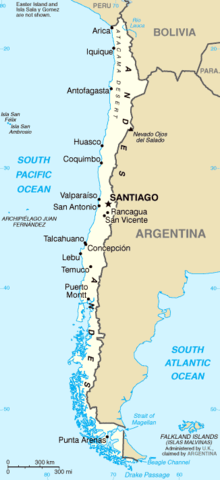
Water supply and sanitation in Latin America is characterized by insufficient access and in many cases by poor service quality, with detrimental impacts on public health. Water and sanitation services are provided by a vast array of mostly local service providers under an often fragmented policy and regulatory framework. Financing of water and sanitation remains a serious challenge.
Water supply and sanitation in Mexico is characterized by achievements and challenges. Among the achievements is a significant increase in access to piped water supply in urban areas as well as in rural areas between 1990 and 2010. Additionally, a strong nationwide increase in access to improved sanitation was observed in the same period. Other achievements include the existence of a functioning national system to finance water and sanitation infrastructure with a National Water Commission as its apex institution; and the existence of a few well-performing utilities such as Aguas y Drenaje de Monterrey.
Drinking water supply and sanitation in Ecuador is characterized by a number of achievements and challenges. One key achievement is a significant increase in both access to an at least basic water source and at least basic sanitation. Significant increases in coverage in urban areas were achieved both by the public utility EMAAP-Q, serving the capital Quito, and the private concessionaire Interagua in the country's largest city Guayaquil. However, municipalities rely overwhelmingly upon central government investment, rather than recouping the costs at a local level. Another problem is intermittent water supply, which affects half of the urban areas. Also, only 8% of all collected wastewater is being treated. The level of non-revenue water is estimated at 65%, one of the highest in Latin America. Addressing these challenges is complicated by the atomization of the sector: A multitude of stakeholders – the Ministry of Housing, the Emergency Social Investment Fund, the Solidarity Fund, the State Bank, NGOs, municipalities and others – intervene in the sector. Despite the existence of an Interinstitutional Committee for Water and Sanitation there remains room to improve coordination.
Water supply and sanitation in Colombia have been improved in many ways over the past decades. Between 1990 and 2010, access to improved sanitation increased from 67% to 82%, but access to improved water sources increased only slightly from 89% to 94%. In particular, coverage in rural areas lags behind. Furthermore, despite improvements, the quality of water and sanitation services remains inadequate. For example, only 73% of those receiving public services receive water of potable quality and in 2006 only 25% of the wastewater generated in the country underwent any kind of treatment.
Uruguay is the only country in Latin America that has achieved quasi-universal coverage of access to safe drinking water supply and adequate sanitation. Water service quality is considered good, with practically all localities in Uruguay receiving disinfected water on a continuous basis. 70% of wastewater collected by the national utility was treated. Given these achievements, the government's priority is to improve the efficiency of services and to expand access to sewerage, where appropriate, in areas where on-site sanitation is used.
Access to drinking water and sanitation in El Salvador has been increased significantly. A 2015 conducted study by the University of North Carolina called El Salvador the country that has achieved the greatest progress in the world in terms of increased access to water supply and sanitation and the reduction of inequity in access between urban and rural areas. However, water resources are heavily polluted and the great majority of wastewater is discharged without any treatment into the environment. Institutionally a single public institution is both de facto in charge of setting sector policy and of being the main service provider. Attempts at reforming and modernizing the sector through new laws have not borne fruit over the past 20 years.
Access to at least basic water increased from 94% to 97% between 2000 and 2015; an increase in access to at least basic sanitation from 73% to 86% in the same period;
Drinking water supply and sanitation coverage in Honduras has increased significantly in the last decades. However, the sector is still characterized by poor service quality and poor efficiency in many places. Coverage gaps still remain, particularly in rural areas.
Drinking water and sanitation in Nicaragua are provided by a national public utility in urban areas and water committees in rural areas. Despite relatively high levels of investment, access to drinking water in urban areas has barely kept up with population growth, access to urban sanitation has actually declined and service quality remains poor. However, a substantial increase in access to water supply and sanitation has been reached in rural areas.

Drinking water supply and sanitation in Argentina is characterized by relatively low tariffs, mostly reasonable service quality, low levels of metering and high levels of consumption for those with access to services. At the same time, according to the WHO, 21% of the total population remains without access to house connections and 52% of the urban population do not have access to sewerage. The responsibility for operating and maintaining water and sanitation services rests with 19 provincial water and sewer companies, more than 100 municipalities and more than 950 cooperatives, the latter operating primarily in small towns. Among the largest water and sewer companies are Agua y Saneamientos Argentinos (AYSA) and Aguas Bonarenses S.A. (ABSA), both operating in Greater Buenos Aires, Aguas Provinciales de Santa Fe, and Aguas Cordobesas SA, all of them now publicly owned. In 2008 there were still a few private concessions, such as Aguas de Salta SA, which is majority-owned by Argentine investors, and Obras Sanitarias de Mendoza (OSM).
Bolivia's drinking water and sanitation coverage has greatly improved since 1990 due to a considerable increase in sectoral investment. However, the country continues to suffer from what happens to be the continent's lowest coverage levels and from low quality of services. Political and institutional instability have contributed to the weakening of the sector's institutions at the national and local levels. Two concessions to foreign private companies in two of the three largest cities—Cochabamba and La Paz/El Alto—were prematurely ended in 2000 and 2006 respectively. The country's second largest city, Santa Cruz de la Sierra, relatively successfully manages its own water and sanitation system by way of cooperatives. The government of Evo Morales intends to strengthen citizen participation within the sector. Increasing coverage requires a substantial increase of investment financing.
Water supply and sanitation in Venezuela is currently limited and many poor people remain without access to piped water. Service quality for those with access is mixed, with water often being supplied only on an intermittent basis and most wastewater not being treated. Non-revenue water is estimated to be high at 62%, compared to the regional average of 40%. The sector remains centralized despite a decentralization process initiated in the 1990s that has now been stalled. Within the executive, sector policies are determined by the Ministry of Environment. The national water company HIDROVEN serves about 80% of the population.
The water and sanitation sector in Peru has made important advances in the last two decades, including the increase of water coverage from 30% to 85% between 1980 and 2010. Sanitation coverage has also increased from 9% to 37% from 1985 to 2010 in rural areas. Advances have also been achieved concerning the disinfection of drinking water and in sewage treatment. Nevertheless, many challenges remain, such as:
Costa Rica has made significant progress in the past decade in expanding access to water supply and sanitation, but the sector faces key challenges in low sanitation connections, poor service quality, and low cost recovery.
Despite many years of concerted efforts and achievements in expanding coverage and improving service sustainability, many issues remain to be addressed in the water and sanitation sector. Key issues include: (i) a low level of coverage for both water and sanitation, in particular in rural areas; (ii) a low level of cost recovery, despite a legal obligation for tariffs to recover costs; and (iii) an institutional framework that is only partially effective.
The Dominican Republic has achieved impressive increases in access to water supply and sanitation over the past two decades. However, the quality of water supply and sanitation services remains poor, despite the country's high economic growth during the 1990s.
The drinking water supply and sanitation sector in Guatemala is characterized by low and inconsistent service coverage, especially in rural areas; unclear allocation of management responsibilities; and little or no regulation and monitoring of service provision.
Water supply and sanitation in Spain is characterized by universal access and good service quality, while tariffs are among the lowest in the EU. Almost half of the population is served by private or mixed private-public water companies, which operate under concession contracts with municipalities. The largest of the private water companies, with a market share of about 50% of the private concessions, is Aguas de Barcelona (Agbar). However, the large cities are all served by public companies except Barcelona and Valencia. The largest public company is Canal de Isabel II, which serves the metropolitan area of Madrid.
Water supply and sanitation in Panama is characterized by relatively high levels of access compared to other Latin American countries. However, challenges remain, especially in rural areas. Panama has a tropical climate and receives abundant rainfall, yet the country still suffers from limited water access and pollution. Intense El Niño periods, periodic droughts, reduce water availability. Multiple factors like urbanization, impacts of climate change, and economic development have decreased water resources. The high frequency of floods in recent years and the lack of corresponding measures resulted in tension among the local population. Rapid population growth in recent decades led to an unprecedented increase in freshwater demand. Regional inequality exists in water resources and water governance. An estimated 7.5-31% of Panama's population lives in isolated rural areas with minimal access to potable water and few sewage treatment facilities.
The privatization of water and sanitation services in Argentina between 1991 and 1999 under the government of Carlos Menem was part of one of the world's largest privatization programs. Water and sanitation concessions with the private sector were signed in 28% of the country's municipalities, covering 60% of the population.









